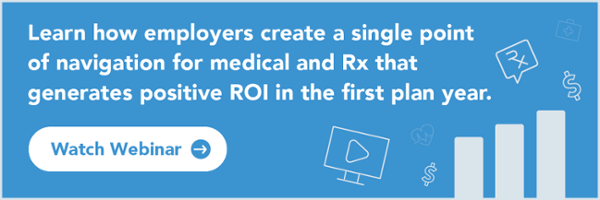When Healthcare Bluebook launched in 2007, the purpose was straightforward: to protect patients by exposing the true quality and cost of healthcare and empower choice. The methodology behind the purpose has established Bluebook as an industry pioneer in the healthcare transparency spectrum.
What sets Bluebook apart?
In healthcare, the meaning of “transparency” has a somewhat narrow interpretation, in part due to complex and confusing mandates like the Transparency in Coverage rules and No Surprises Act, parts of which went into effect January 1, 2021 requiring hospitals and health plans to post their prices.
But Bluebook’s reach and depth of offering goes far beyond cost transparency alone and factors in quality metrics built from raw medical discharge claims in the CMS Standard Analytics file. Bluebook’s clear and transparent quality methodology utilizes independent—not self-reported—data and is based on patient outcomes that are risk- and volume-adjusted.
Bluebook also maps physicians to the hospitals where they perform cases and uses the same methodology to evaluate the quality of both hospitals and individual physicians, which is a crucial component of Bluebook’s process, says Bill Kampine, Co-Founder and Sr. Vice President of Analytics and Innovation.
Using the same methodology is critical because it allows us to make apples-to-apples assessments on patient outcomes for both facility and doctor.
In addition, the Data Analytics team analyzes patient patterns of movement from high- to low-cost providers and identifies providers who consistently deliver high-quality care at a Fair Price™—the foundation of Bluebook’s latest service innovation, Bluebook CareConnect.
But how does Bluebook manage the myriad of data that forms the core of its healthcare quality and cost solution?
Welcome to the world of open datasets
With millions of points of data, Bluebook’s vast data network largely comprises information from “open” datasets, which are collections of data accessible to anyone who wants to download it. Open datasets can be used for a variety of purposes, many of which the original owner may not have initially considered when the dataset was created. This “free” pool of information is extremely valuable because it allows data to be used in new and different ways, according to Mikil Taylor, Vice President of Data Analytics for Bluebook.
Collecting information from a variety of datasets creates a level playing field. The information is freely available to anyone who wants it but it’s up to the user to make it relevant and viable.
On the flip side, many datasets are created for proprietary purposes and, therefore, are “closed” and not shared with general users unless the owner chooses to make it available, like the CMS elected to do in 2014.
For the first time ever, the CMS published the entire dataset of Medicare Part B payments to physicians that culminated in 9.2 million lines of physician transactions worth $77 billion and included physicians’ names and addresses and the exact services billed to Medicare.
The mammoth dataset was a treasure-trove of information for analysts and investigative journalists tracking “patterns of use that strongly suggest abuse or fraud” and demonstrates the broad value and use of open datasets, says Taylor.
The information was always there, but Medicare wasn’t capturing it on their own. It wasn’t until the data was released to the public that those who knew what to look for were able to uncover actual evidence of Medicare fraud.
Social graphs are also a type of dataset, valuable because they reveal connections between people allowing analysts to examine patterns of movement between different groups. Anyone active on social media is part of a social graph, Taylor explains.
Facebook is a great example of a social graph because all of your connections, and all of their connections, point back to you.
The data industry is filled with companies that provide open datasets for every category imaginable. For example, CareSet Systems creates, maintains, and improves open healthcare datasets including one of the largest openly accessible social graphs in existence, the DocGraph Hop Teaming Dataset, which plots the movement of patients from doctors to facilities and other healthcare providers. According to Taylor, this data provides unique insight into patient behavior.
The HopTeaming dataset shines a light on how patients move through the healthcare system, which allows us to help patients better understand their own individual healthcare journey. We have even used it as a training tool for entry level data analysts to help them get experience with this type of social data.
Just as Bluebook uses datasets to drive its quality and cost metrics, the quality of a dataset must also be proven before the information can be trusted. Dataset providers like CareSet Systems are defined by characteristics such as accuracy, precision, reliability, and consistency—essential elements of the industry-leading data “backbone” that drives Bluebook’s purpose to protect patients and empower choice.
Learn more about Bluebook’s service offering, including Bluebook CareConnect, or Contact Us to try our free search tool or schedule a Bluebook demo.
